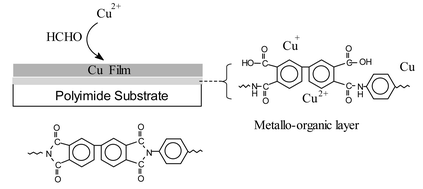A study on the interfacial composition of the electroless-copper-plated BPDA-PDA polyimide sheet
Abstract
This work studies the chemical composition at the interface generated through the electroless deposition of a copper layer onto a polyimide (PI) slice. Upilex-S®-50 [poly(biphenyl dianhydride-p-phenylenediamine)]
(BPDA-PDA) polyimide film was selected as the substrate, on which wet chemstry modifications were carried out before plating. The modifications comprise the alkali catalyzed


 Please wait while we load your content...
Please wait while we load your content...